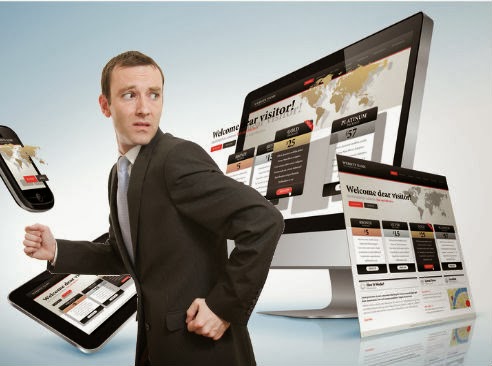The year is young: there's still plenty of time to reinvent, innovate, and re-design. Almost everything in the market has a prevailing trend; and the world wide web is no exception. The main problem with wed trends though, is that it either a) becomes saturated after only a short while, OR b) it's completely inappropriate but turns into a fad anyway.

The truth about trends is: just because it's popular now, doesn't mean it's going to be effective. Even before 2014 began, there had been plenty of forecasts and predictions about what's going to be in or out. While it's good practice to grab a couple of ideas (such as parallax scrolling design), it's not advised to go for a certain bandwagon simply because it's the fad.
Top web design agency Wearinteractive New York Web Development suggests exercising caution as well as careful strategy when implementing trends. In the meantime, here are three of what's been in vogue in the world of cyberspace recently, and why it's best to reconsider them:
Stock Photography
Stock photos or photography, are a collection of photos that can be used for specific purposes. Nowadays, these are found or ordered in online databases. Businesses who wish to use stock photos for their websites must often obtain licenses from the image source or photographer. However, some people offer theirs for free.
Good photography can be expensive; that's why plenty turn to stock photos. However, quality is compromised because most of these images are generic and are only made for public redistribution. It doesn't carry a business' brand, mission, goal, or objective. While this can work for some, most users will find it cold, awkward, inappropriate, and even useless.
Splash Pages
A splash screen or page is what appears while content is loading. In some websites, it also contains an introductory animation or video clip that's supposed to put a business into a more positive light. One other purpose is to inform the user that a task is still ongoing. Unfortunately, splash pages are not always warmly received.
In a select few instances, it can deliver a strong impact to the site visitor. Somehow, because there's something interesting on the screen, they can become distracted (even amazed) for a brief moment. Once the magic fades though, it's just seen as a waste of time and space. For users in a hurry, they simply skip this page or exit the site entirely.
Web 2.0 Design
What is a web 2.0 design exactly? The truth is that it's such a broad term that it's fairly impossible to give just one definition. The short of it though is, web 2.0 design can be an on-going process of using technology to create an online medium where people can come together. Elements such as fonts, navigation, logos, colors, themes, icons, and special effects are all components of a web 2.0 design.
It's still debatable whether the use of 'flat design' is favorable in the long run. As mentioned earlier, consider the business goal, its products and services, and the kind of brand to be presented to the public. Change some key pieces to update a website's look and keep it fresh; but don't be misguided by web design trends that could disappear as quickly as they came.










No comments:
Post a Comment